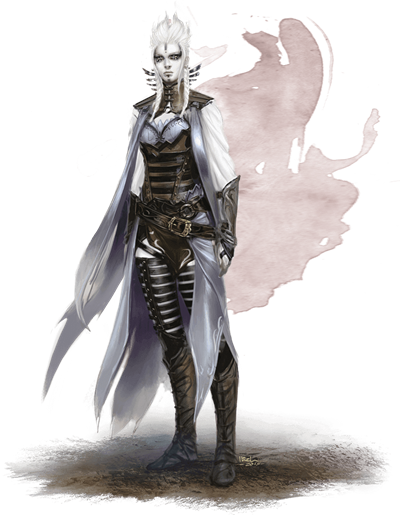 Class is back in session. This week, make a pact with a glamorous and enchanting being from another world, trading something precious in exchange for power. Your patron is no evil, power-hungry fiend, but rather an inscrutable Archfey who desires influence over the mortal world. Why do they seek this power, and for what reason do they want you as their mortal agent? Perhaps it’s vanity, perhaps it is power after all, or perhaps they are driven simply by the churlish desire to cause chaos, toying with mortals like the scurrying insects that they are.
Class is back in session. This week, make a pact with a glamorous and enchanting being from another world, trading something precious in exchange for power. Your patron is no evil, power-hungry fiend, but rather an inscrutable Archfey who desires influence over the mortal world. Why do they seek this power, and for what reason do they want you as their mortal agent? Perhaps it’s vanity, perhaps it is power after all, or perhaps they are driven simply by the churlish desire to cause chaos, toying with mortals like the scurrying insects that they are.
We’ve completed our first full rotation of the twelve classes, and exhausted all the content that the Basic Rules have to offer—as far as classes go, that is. This next wave of the Class 101 series will appraise every subclass within the Player’s Handbook and break down each subclass’s strengths, weaknesses, thematic elements, and everything else a player would want to know before playing that subclass. Because of this, you will need to own the Player’s Handbook (or purchase the subclass a la carte on the Marketplace) in order to make full use of this series.
Check out the other guides in the Class 101 series, like the broad overview of the warlock class in Warlock 101: A Beginner’s Guide to Eldritch Might, and Warlock 101: The Fiend. If you’re interested in playing other classes, check out the entire Class 101 series.
Story of the Archfey
“You’re late for your brother’s coronation, my prince.”
A tiny dragon, no larger than a housecat and covered with pearlescent scales, was perched atop a marble mannequin head. The head was draped with jeweled strands, and rested upon an opulent, three-mirrored vanity. Before the table stood a tall man, beautiful in all ways. His eyebrows were sleek and angled, his jaw was strong but refined, and his skin shone in the candlelight.
“I am not late, O Archfey,” said the prince, unperturbed by the voice of his otherworldly patron slithering from the mouth of his faithful pseudodragon familiar. He gazed at his own reflection and casually raised a straight razor to his face, gracefully shaving his beard into attractive stubble. “All those who are waiting at rapt attention are simply early. I will be their true king, after all. The rabble must acclimate themselves to serving my whims.”
The pseudodragon’s snout twitched, and its mouth curled into a sharp-toothed smile. “You wish to place them all under your spell, don’t you? You would make a fine addition to the Summer Court, my prince.”
The warlock-prince laughed. “In time, yes, they will all fall to my charms. But I am in no hurry. All that is needed today is to work our magic upon one person.”
Otherworldly Patron: The Archfey Features
Warlocks who make a pact with an Archfey are masters of charms and enchantments. Their patron grants them access to additional spells, as well as a number of innate magical abilities that help them ensnare the senses of their foes. Warlocks gain four subclass features at 1st, 6th, 10th, and 14th level. You can read all of the Archfey features in the Player’s Handbook. In summary, your subclass features allow you to:
- Gain access to an expanded list of warlock spells
- Beguile nearby creatures for a short time
- Vanish in a puff of mist to escape harm
- Counteract the charms of other creatures
- Imprison another being within their own mind, with only your duplicitous voice for company
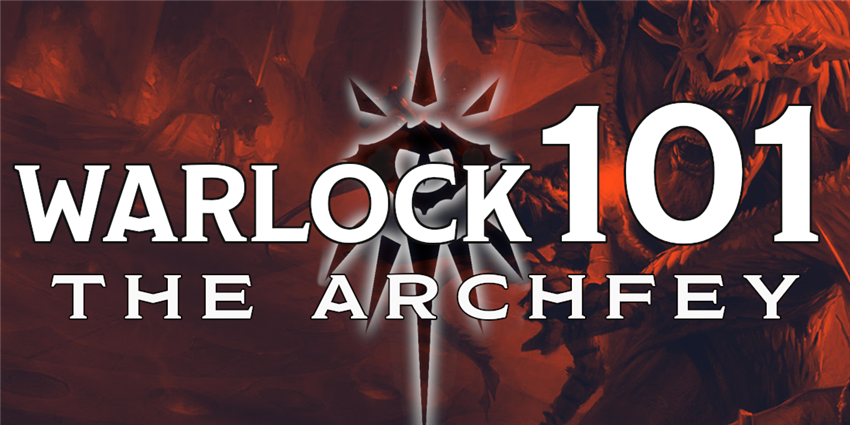
Benefits of the Archfey Patron
As guileful members of the Summer and Winter Courts of the Feywild, Archfey are all well-trained in the arts of deception and intrigue. Mortal beings who petition an Archfey for power seek a fragment of that power. Though every warlock has their own reasons for seeking power, those who forge a pact with an Archfey seek power through influence, not through destruction. Every single class feature granted by the Archfey patron allows you to help solve problems nonviolently, making this subclass perfect for an intrigue- or stealth-heavy game.
However, these abilities are powerful even outside of these specific campaign archetypes. Your nonviolent powers can be used as potent debuffs—particularly your Expanded Spells, Fey Presence, and Dark Delirium features—making you a particularly powerful support caster.
Drawbacks of the Archfey Patron
Warlocks are at their best when they have access to spells that efficiently use their limited spell slots. This means that spells with long durations are most valuable for warlocks, as well as spells that scale in power when cast with higher-level spell slots. While a warlock of the Fiend can unleash a devastating fireball at its maximum level, that incredible damage may not have a long-lasting effect on the state of the adventure. The new spells granted by the Archfey’s Expanded Spell list tend to have long durations, but few of them scale well when cast at higher levels. This prevents an Archfey warlock’s lower level spells (such as faerie fire and calm emotions) from being attractive options, as that precious spell slot could be better spent casting a spell of higher level, or at least casting a low-level spell that scales in power.
It should go without saying that while the Archfey patron is indeed powerful within its playstyle, players looking for a subclass geared towards all-out offense will find the Archfey patron lacking. The Fiend patron is much more powerful in terms of raw damage.
Suggested Build
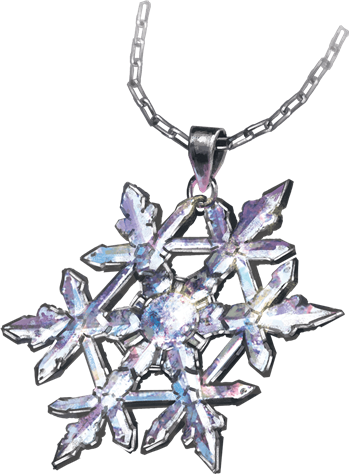 If you’re playing an Archfey patron warlock from 1st level, you should choose a race that gives you a bonus to your Charisma score. Half-elves gain an innate bonus to Charisma, and their Fey Ancestry is an easy way to tie your character’s story together. By the same token, dark elves share this fey connection and also gain a bonus to Dexterity and Charisma—plus, they have innate spells that can supplement your limited warlock spell slots. Dragonborn is an interesting racial choice for a warlock thanks to their innate bonus to Strength, especially if you decide to choose the Pact of the Blade later on (see “Pact Boon,” below).
If you’re playing an Archfey patron warlock from 1st level, you should choose a race that gives you a bonus to your Charisma score. Half-elves gain an innate bonus to Charisma, and their Fey Ancestry is an easy way to tie your character’s story together. By the same token, dark elves share this fey connection and also gain a bonus to Dexterity and Charisma—plus, they have innate spells that can supplement your limited warlock spell slots. Dragonborn is an interesting racial choice for a warlock thanks to their innate bonus to Strength, especially if you decide to choose the Pact of the Blade later on (see “Pact Boon,” below).
Once you’ve placed Charisma as your highest ability score, consider what else is important to you. Dexterity tends to be important for warlocks, to improve their Armor Class, but social abilities like Wisdom and Intelligence are useful for intrigue-heavy games. If you want to fight with sword and shield or a two-handed weapon, Strength might be the second most important ability for you, especially if you choose the Pact of the Blade at 3rd level (see "Pact Boon," below). Constitution will also help you take more blows in combat, and hang onto your precious concentration spells more easily (more on them later).
As usual, your character’s background is up to you. Anyone can become a warlock, though forging a pact with an otherworldly entity typically requires some sort of sacrifice. Consider what you could have sacrificed in your backstory in exchange for power—or if you have promised to be an investment for your Archfey patron, putting your eternal servitude on the line as collateral for some sort of worldly power that you have promised to grant them later. It makes sense for characters with the Noble background to seek out an Archfey, but picking an unusual background can help make your character stand out.
Selecting EQUIPMENT when creating your warlock is a good idea; a simple weapon of your choice, like a dagger or a quarterstaff, is useful. Your choice of arcane focus or spell component pouch is entire aesthetic, and a dungeoneer’s pack will almost always be more useful than a scholar’s pack. A few more daggers, some leather armor, and another simple weapon of your choice helps round out your arsenal. You can wear light armor, so hunting for a set of studded leather later in your adventuring career might be useful.
Spells
Warlocks don’t have the Spellcasting trait like most other spellcasters. Instead, they have Pact Magic. You start at 1st level knowing two cantrips, two 1st-level spells, and only a single spell slot. But that spell slot is recovered whenever you take a short rest; you could hypothetically cast spells all day long, as long as you have a little catnap in-between castings. Also of note is that your spell slots are all of the highest level you can cast (see the “Slot Level” column on your class features table). This isn’t useful now, but having your spells automatically scale to their highest possible power level is an incredible feeling.
Since you only have one spell slot for now, you need to make it count. You get a second slot at 2nd level, which is nice, but you don’t get your third spell slot until 11th level! Fortunately, you get the most powerful damaging cantrip in the game, eldritch blast, so you’re never useless, even when you’re out of spell slots.
You can learn any two 1st-level spells from the warlock spell list—which includes the 1st-level spells on your “Archfey Expanded Spells” list. You’ll want to choose these spells carefully; since the number of spells you know is severely limited, you want to have a versatile spell list. As you go on adventures and learn what dangers your character tends to face, you can personalize your spell loadout. Try to choose one labeled SUPPORT and one spell labeled either SOCIAL or DEFENSE. Note that this list only includes some spells from the Player's Handbook, so if you want to choose more unusual spells, or have other sources like Xanathar's Guide to Everything, you'll have to do a little self-directed research. This list is just here to get you started if this is your first time playing an Archfey patron warlock.
Especially at lower levels, a warlock will want to have spells that last for a long time. Since you have so few spell slots, maintaining concentration on spells with lasting effects is much more efficient than simply firing off a single explosive spell. If you want to deal damage, hex is one of the mightiest warlock spells in the game. However, if you want to lean into your SUPPORT or SOCIAL-focused role, spells like charm person can be incredibly powerful, especially since it can affect multiple people as it scales in power.
- Armor of Agathys (OFFENSE/DEFENSE)
- Charm person (SOCIAL)
- Faerie fire (SUPPORT)
- Hex (OFFENSE)
Pact Boon
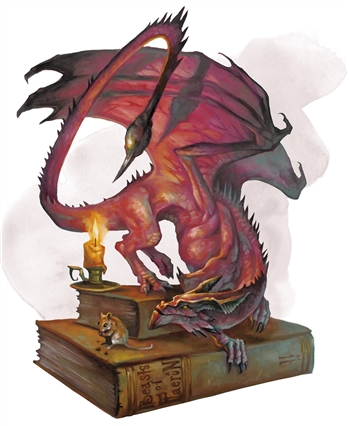 At 3rd level, you get to request a boon from your patron. This further defines the nature of your pact: do you wish to invoke the bloodstained Pact of the Blade? The shadowy and arcane Pact of the Tome? Or the manipulative Pact of the Chain? These pacts grant you a small bit of additional power immediately, and access to certain Eldritch Invocations later on.
At 3rd level, you get to request a boon from your patron. This further defines the nature of your pact: do you wish to invoke the bloodstained Pact of the Blade? The shadowy and arcane Pact of the Tome? Or the manipulative Pact of the Chain? These pacts grant you a small bit of additional power immediately, and access to certain Eldritch Invocations later on.
Most who follow the Archfey prefer the subtle Pact of the Chain, which grants them a familiar to do their bidding. However, the Pact of the Tome’s increased magical flexibility is nothing to sneeze at. As for the Pact of the Blade, even this bloody path has use in intrigue-heavy campaigns. After all, there is no poisoned dagger better hidden than one you can conjure from thin air or dispel at will.
Eldritch Invocations
Once you reach 2nd level, you gain the ability to select two Eldritch Invocations. You can trade out an old invocation for a new one whenever you gain a level in this class, and you gain brand-new invocations every two or three levels (again, see the warlock class features table). Some invocations have prerequisites that you must meet in order to select them, so learning how to trade out old invocations for this fresh and exciting ones is an important skill to master. Here are some invocations that will probably be useful to you as a warlock of the Archfey:
Beguiling Influence. If your campaign has a lot of intrigue—or even if just the current arc of your campaign is roleplay-heavy—then this invocation will make you a silver-tongued charmer.
Bewitching Whispers. The ability to all but puppeteer a creature for a minute is perfectly in line with what Archfey warlocks seek to do.
Book of Ancient Secrets. This invocation is only useful to Pact of the Tome warlocks (a choice you can make at 3rd level), but it’s incredibly useful. Since you don’t have the Ritual Casting feature that many other spellcasting classes have, this is the only way to cast ritual spells as a warlock. It’s incredibly powerful.
Gaze of Two Minds. In a campaign where secrets reign supreme, the ability to see through the eyes of a willing double agent is incredibly powerful. The same applies to the One with Shadows invocation, which lets you become invisible while motionless in areas of shadow.
Mask of Many Faces. Like Beguiling Influence, this invocation is great for campaigns that lay the intrigue on hot and heavy. Situational, but powerful within its niche.
Voice of the Chain Master. The Pact of the Chain can be incredibly powerful, if you have the tactical inclination to micromanage both your character and your familiar. This invocation just makes that power greater.
Feats
 At 4th level, you get to gain either an Ability Score Increase or a feat. Choosing an Ability Score Increase lets you increase one ability score by +2 (such as increasing your Charisma score from 16 to 18) or increase two ability scores by +1 (like increasing your Charisma from 15 to 16 and your Dexterity score from 13 to 14). Increasing your ability scores makes you better at a wide variety of things; for instance, increasing your Charisma score makes it easier to hit with your spell attacks and also make it harder for enemies to resist your spells that require saving throws.
At 4th level, you get to gain either an Ability Score Increase or a feat. Choosing an Ability Score Increase lets you increase one ability score by +2 (such as increasing your Charisma score from 16 to 18) or increase two ability scores by +1 (like increasing your Charisma from 15 to 16 and your Dexterity score from 13 to 14). Increasing your ability scores makes you better at a wide variety of things; for instance, increasing your Charisma score makes it easier to hit with your spell attacks and also make it harder for enemies to resist your spells that require saving throws.
Feats, on the other hand, give you a special ability that could be more helpful in a specific circumstance, as opposed to the broad improvement that an Ability Score Increase could give you. Charisma is your most important ability score, since it determines the power of your spells. Once you’ve increased your Charisma score to 20 (its maximum value), or even just to 18 (a pretty good value), you may want to choose a feat. You can choose any feat you want to support your character concept, but there are some feats that may be more useful to your character than others.
Actor. This feat shines in social situations, and gives you a +1 bump to your Charisma score. A decent pick if you have an odd Charisma score and want a little something to make you even more guileful.
Inspiring Leader. Your already-high Charisma makes you an excellent candidate to be the social face of your party. As your character becomes more confident in their own abilities, having them become a leader that inspires your allies to great deeds is an excellent story beat, with some good mechanics attached.
Skulker. If stealth is a key focus of your campaign, pairing this feat with the One with Shadows invocation makes you an unparalleled sneak.
If you want more advice for building a warlock, check out Warlock 101. Have you ever played an Archfey pact warlock? What advice would you give to players that want to play this subclass?
Create A Brand-New Adventurer Acquire New Powers and Adventures Browse All Your D&D Content
 James Haeck is the lead writer for D&D Beyond, the co-author of Waterdeep: Dragon Heist, Baldur's Gate: Descent into Avernus, and the Critical Role Explorer's Guide to Wildemount, a member of the Guild Adepts, and a freelance writer for Wizards of the Coast, the D&D Adventurers League, and other RPG companies. He lives in Seattle, Washington with his fiancée Hannah and their animal companions Mei and Marzipan. You can find him wasting time on Twitter at @jamesjhaeck.
James Haeck is the lead writer for D&D Beyond, the co-author of Waterdeep: Dragon Heist, Baldur's Gate: Descent into Avernus, and the Critical Role Explorer's Guide to Wildemount, a member of the Guild Adepts, and a freelance writer for Wizards of the Coast, the D&D Adventurers League, and other RPG companies. He lives in Seattle, Washington with his fiancée Hannah and their animal companions Mei and Marzipan. You can find him wasting time on Twitter at @jamesjhaeck.








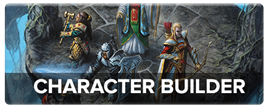
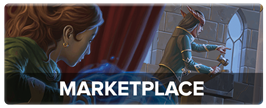
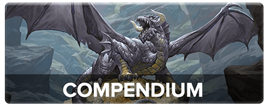
-
View User Profile
-
Send Message
Posted Jan 17, 2020Awesome article! I think most of the advice given applies to any warlock, but it definitely gives me a clearer view as a dm to see what kind of powers the Archfey would convene. Thanks James!
-
View User Profile
-
Send Message
Posted Jan 17, 2020I actually have a wood elf druid/warlock (archfey) that worships the Queen of Air and Darkness and you nailed the build here. Perfect spell/feat combos to make this awesome. Great article!
-
View User Profile
-
Send Message
Posted Jan 17, 2020Love the article.
Id also say that the Eldritch Invocations like Devils sight to give you 120ft sight in both magical/non magical darkness is great for human or Dragonborn characters who don’t have access to darkvision. Also agonising blast to make the most out of your charisma modifier for Eldritch blast.
-
View User Profile
-
Send Message
Posted Jan 17, 2020Always wanted to make a spy-warlock like this! Great Article!
-
View User Profile
-
Send Message
Posted Jan 17, 2020Agonizing Blast is a very powerful invocation for any warlock that wants to dish out heavy damage. If support is your main focus, though, your limited number of invocations might be better spent elsewhere.
-
View User Profile
-
Send Message
Posted Jan 17, 2020So basically David Bowie
-
View User Profile
-
Send Message
Posted Jan 17, 2020I have ran an Archfey Warlock into the low teens (13th level) and I found some cool things to make you a pretty tough customer, and they will work for any Warlock not just an Archfey. Maximize your charisma, take agonizing blast, and then take the combat casting feat. Then later add repelling blast for some fun. That way when enemies get too close to you, you get an attack of opportunity and blast them backwards. You can also blast enemies off of mounts, cliffs, walls, into burning oil, etc for extra damage. It is super when folks are mounted on flying mounts, just blast them off to their death.
Then on the melee side of things, I recommend taking pact of the blade, duel wield feat, and then use Shadow Blade to duel wield one pact weapon and one shadow blade. Because your spells are always cast at your max level, Shadow Blade does a ton of damage as you go up in level. Thirsting Blade gives you another attack with your pact weapon. So if is you get 2 attacks with it, one attack with your shadow blade, and possibly a spell from war caster if you get an opportunity, per round. Then at level 12 add in lifedrinker so your pact weapon gets your charisma bonus in necrotic damage. My standard combat method was to cast blade ward so I take half damage for a round and wade in. If you get in trouble, misty escape. Add in armor of agathys. Then you are rolling in taking half damage from blade ward, doing 3 attacks for a lot of damage, and every time they hit you they are taking like 50 points when you are higher level. it become real apparent to most monsters that they are not going to win the race to 0 hit points against you real quick. Critical hits can get your character dealing over 100 HP of damage per round.
Lastly, one of the spells I found highly useful for controlling combat and enemies I found highly under rated is Hunger of Hadar. It makes your enemies so they move slow, can't see where they are going, and does multiple damage types so it is hard to completely resist. It also works as area denial. If your party works together and makes it so some members can see in the dark (Devil sight is good here) you can often kill all your enemies before they escape its grasp.
-
View User Profile
-
Send Message
Posted Jan 18, 2020Though you might question the sanity of doing so, hags are fey as well, so your patron could be a grandmother hag. Besides, who said you chose the pact?
-
View User Profile
-
Send Message
Posted Jan 18, 2020My first Archfey Patron had been The Lady of the Lake, who unlike the fables, had been assigned the task of watching over various magical swords...not because of some sacred duty, but because she had gambled for power within the Fey courts, and lost.
Her punishment confined her to an assortment of groves and lakes within the Feywild, distributing magical weapons to "worthy" individuals...the most historic being King Arthur, Lancelot, Galahad and the various knights of the round table.
It was all a lofty show, however...the truth was the Lady of the Lake detested her situation as a glorified keeper, and many of the so-called "heroes" met tragic ends...either death by violence because of their famous reputations, or betrayal by their comrades. After their death, the blades would return to the Lady to distribute once again.
That was how my orc warlock, drunk from an late-night round of partying and celebration, stumbled into her grove. Rather than kill him, she bestowed the sword Aerondight to him...not because he was "worthy"; but because he amused her and she wanted to spite the Fey who had placed her in her prison...by giving the blade wielded by Lancelot to a gruff, foolish orc.
Funny thing is...she expected him to die immediately, and get the sword back. But the warlock, by a strange twist of fate, rose to the challenge, and seems to be resisting the death-curse of the weapon.
Which poses a problem...the weapons are only intended for kings, knights, and those of royal blood...individuals destined to rise and fall. And should the Fey Court discover the warlock...both he and The Lady of the Lake will face a fate worse than death...
The plan had been that the warlock would be hunted by four eladrin...each one a Champion of the Seasons (Summer, Autumn, Winter & Spring). Meanwhile, The Lady of the Lake would be plotting her escape from her prison...grooming the bard into a warrior "actually" worthy to fulfill the destiny where so many had failed.
"Oath of the Ancients" paladin makes for a interesting multiclass; and sort of symbolizes the orc's formal training.
-
View User Profile
-
Send Message
Posted Jan 18, 2020Bewitching Whispers lets you cast Compulsion. If you do actually want to "puppeteer" your target, as you say, the target does get to repeat it's save. Please don't mislead with these articles, that's the Feys job.
-
View User Profile
-
Send Message
Posted Jan 18, 2020Dang...beat me to it.
-
View User Profile
-
Send Message
Posted Jan 18, 2020Warlock of the Archfey lacks the overt power of the Fiend and Great Old One, but it's got a lot of roleplay potential. Fun article.
Also, it's the pact that does not end with your character serving an infinite tour of duty in the Blood War or being eaten by the Colour Out of Space.
-
View User Profile
-
Send Message
Posted Jan 18, 2020Have you seen the hilarity that is Archfey 1, Glamour 6? Fey Presence a crowd and immediately Mantle of Majesty anyone unlucky enough to be charmed.
-
View User Profile
-
Send Message
Posted Jan 18, 2020"If you want to fight with sword and shield or a two-handed weapon, Strength might be the second most important ability for you. On the other hand, prioritizing Dexterity would make you a terror with a rapier."
Archfey Warlock is not proficient with shields, nor rapiers. This is a common theme I've noticed in these suggested builds that they just kind of ignore class proficiencies when suggesting what equipment people should use. It hurts new players specifically who read these articles and just blindy try to follow a build, only to be corrected by their DM.
-
View User Profile
-
Send Message
Posted Jan 18, 2020'If you want to fight with sword and shield or a two-handed weapon, Strength might be the second most important ability for you. On the other hand, prioritising Dexterity would make you a terror with a rapier.' But warlocks don't have proficiency with medium armour, shields and martial weapons unless you go hexblade.
-
View User Profile
-
Send Message
Posted Jan 18, 2020The context is clearly for someone who wants to go Pact of the Blade, which grants you proficiency with whatever weapon you make into your Pact Weapon:
-
View User Profile
-
Send Message
Posted Jan 18, 2020If the suggested build requires taking a particular class feature like that, it should be explicitly mentioned i.e. "For those wanting to go Pact of the Blade..." Besides, this still doesn't grant them Shield proficiency, which could now only even be obtained via a feat or multiclassing.
-
View User Profile
-
Send Message
Posted Jan 18, 2020Cool article thanks.
-
View User Profile
-
Send Message
Posted Jan 19, 2020Not mentioned here, but I cross-classed my favorite character that I've yet played (a Oath of the Ancients Paladin/Archfey Warlock) with this subclass, and found it to be incredibly powerful. Straight Paladin can be mighty but very one-dimensional. Adding in the Warlock gave him additional spells, the Misty Visions invocation for a bit of fey flair in social situations, and of course Eldritch Blast as a reliable distance option (and he always had a free hand, since he was a greatsword wielder).
I LOVED this particular archetype, and would encourage y'all to give it a try and tell me how it goes!
-
View User Profile
-
Send Message
Posted Jan 19, 2020Yup.
Tried it in a tavern one time...did a duet with a fellow party member who had Performance proficiency.
Managed to simultaneously charm most of the crowd...the few that we missed got fanatically charmed by the Glamour feature. Then with the bonus action, only said one word for Command...
"Donate."
Instantly showered by all the coin, beer, and valuables at hand...one lady even tried to give us her baby.
The few who weren't charmed got a bit confused, so we bailed out. Had a few fans follow us into the streets...thankfully the party member illusioned us into a nearby alley.